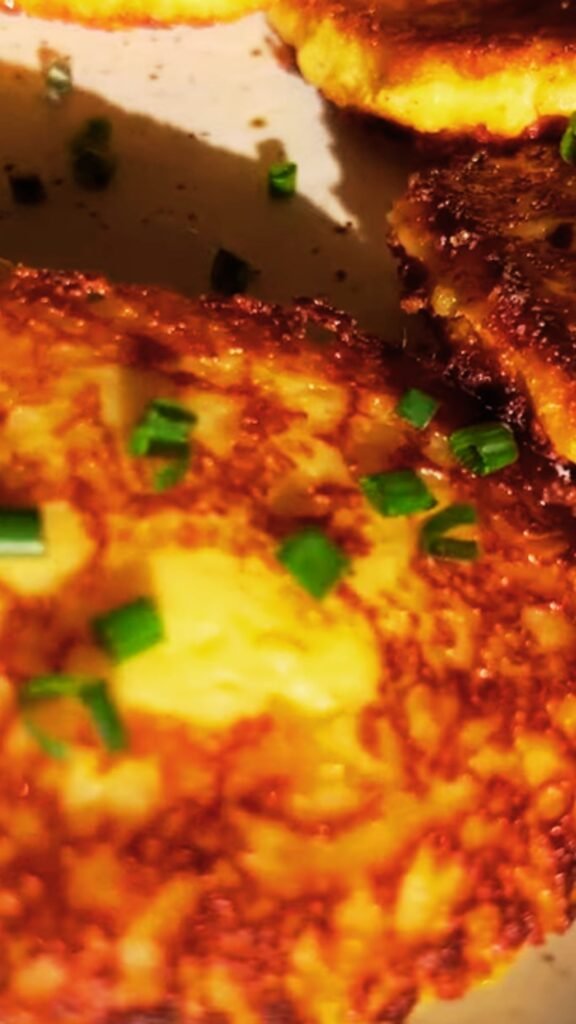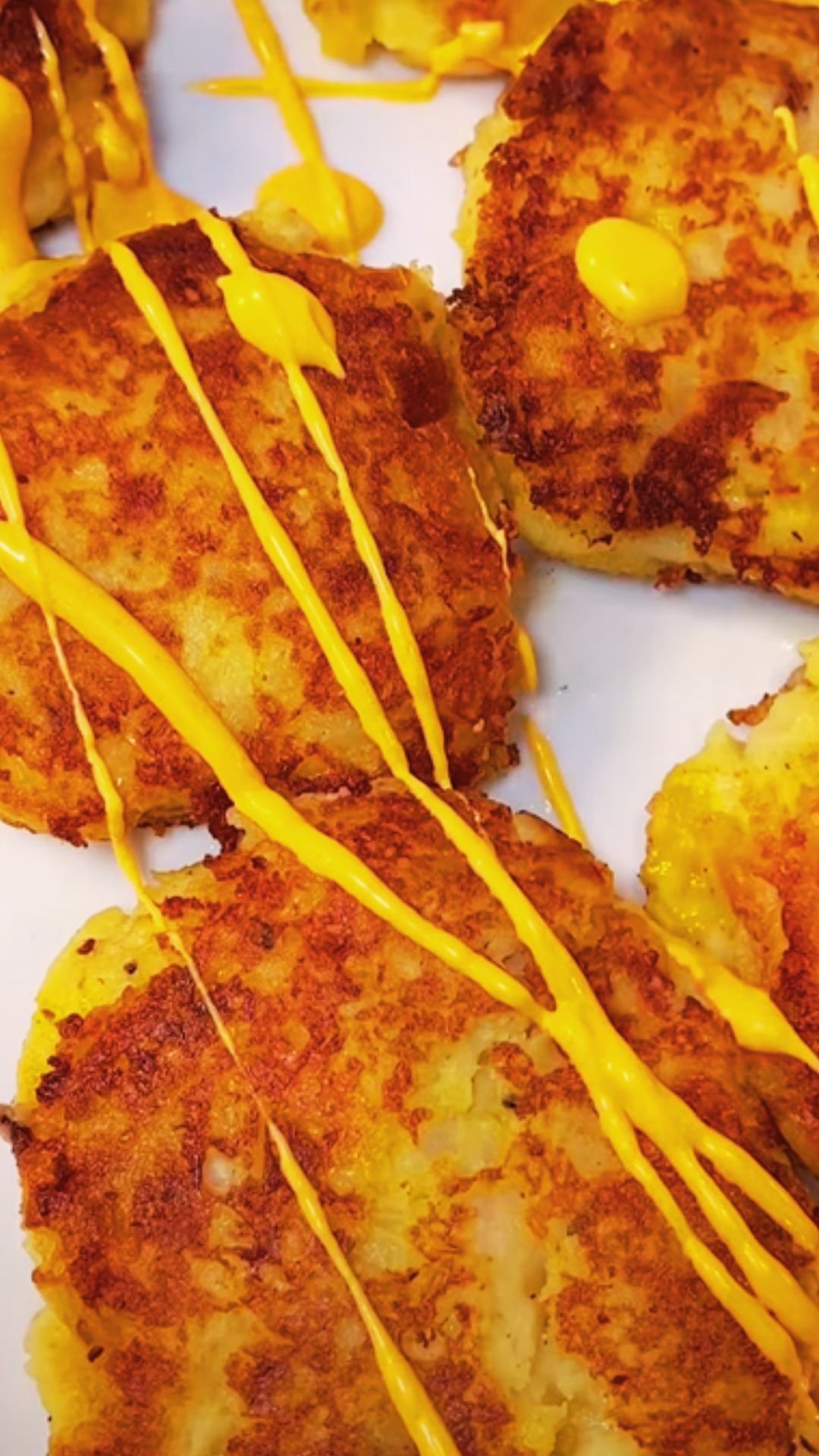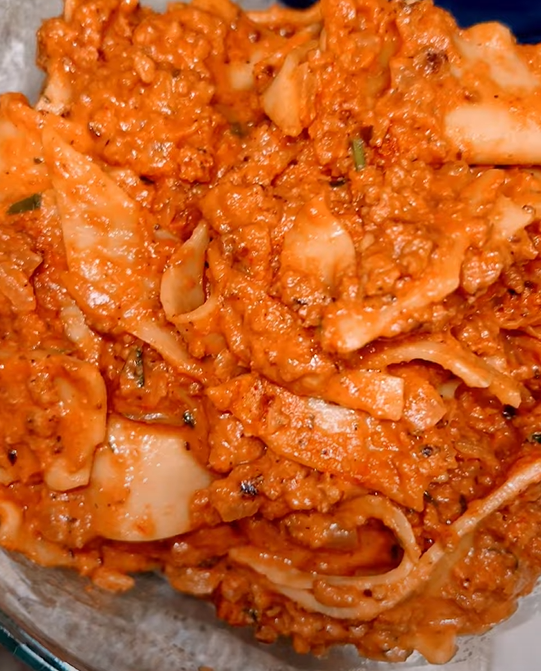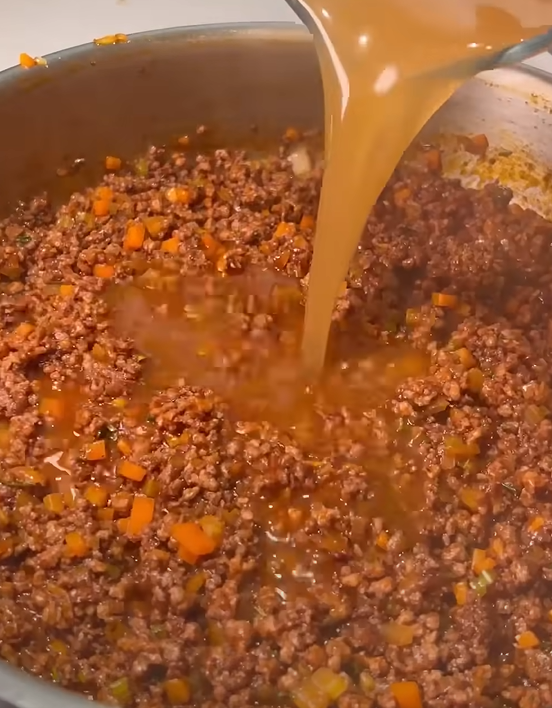I’ll be honest with you – discovering mashed potato pancakes changed my entire relationship with leftovers. What started as a desperate attempt to use up day-old mashed potatoes has become one of my favorite comfort food recipes. These golden, crispy-on-the-outside, fluffy-on-the-inside pancakes are pure magic, and I’m excited to share everything I’ve learned about making them perfect every single time.
There’s something deeply satisfying about transforming humble leftover mashed potatoes into something spectacular. The contrast between the crispy exterior and the creamy interior creates a texture experience that’s simply irresistible. Whether you’re dealing with Thanksgiving leftovers or just made too much for dinner, these pancakes will make you grateful for every extra spoonful.
What Are Mashed Potato Pancakes?
Mashed Potato Pancakes : Savory pancakes made primarily from mashed potatoes, eggs, and flour, pan-fried until golden brown and crispy on the outside while maintaining a soft, fluffy interior.
Potato Patties : Another common name for mashed potato pancakes, emphasizing their flattened, round shape and crispy texture.
Leftover Magic : The transformation of day-old mashed potatoes into a completely new dish through the addition of binding ingredients and pan-frying techniques.
The beauty of mashed potato pancakes lies in their versatility. I’ve made them with everything from basic buttery mashed potatoes to loaded versions with cheese, herbs, and even bacon bits mixed in. Each variation brings its own personality to the table, but the fundamental technique remains the same.
The Science Behind Perfect Mashed Potato Pancakes
Understanding why these pancakes work so well starts with the starch content in potatoes. When you mash potatoes, you’re breaking down cell walls and releasing starches. These starches, when combined with eggs and a small amount of flour, create the perfect binding agent for our pancakes.
The key is in the balance. Too much flour makes them dense and heavy. Too little, and they’ll fall apart in the pan. I’ve found that the ratio of ingredients is crucial, and it can vary depending on how wet or dry your original mashed potatoes were.
Temperature control is another critical factor. I always cook these over medium heat. Too high, and you’ll burn the outside before the inside heats through. Too low, and you won’t get that gorgeous golden crust that makes these pancakes so appealing.
Essential Ingredients and Substitutions
| Ingredient | Amount (6 servings) | Purpose | Substitutions |
|---|---|---|---|
| Leftover mashed potatoes | 3 cups | Base ingredient | Fresh mashed potatoes (cooled) |
| Large eggs | 2 | Binding agent | 3 egg whites or 1/2 cup egg substitute |
| All-purpose flour | 1/4 to 1/2 cup | Structure and binding | Gluten-free flour blend, cornstarch |
| Salt | 1/2 teaspoon | Flavor enhancement | Garlic salt, seasoned salt |
| Black pepper | 1/4 teaspoon | Seasoning | White pepper, paprika |
| Green onions (chopped) | 2 tablespoons | Flavor and color | Chives, regular onion (minced) |
| Vegetable oil | 2-3 tablespoons | Frying medium | Butter, olive oil, coconut oil |
The flour amount depends entirely on your mashed potatoes’ consistency. I start with 1/4 cup and add more if needed. If your potatoes are particularly wet (maybe they had cream or milk added), you’ll need closer to 1/2 cup of flour.
Step-by-Step Preparation Method
Preparing the Mixture
I begin by placing my leftover mashed potatoes in a large mixing bowl. Cold mashed potatoes actually work better than warm ones because they hold their shape better during mixing and cooking. If your potatoes are straight from the refrigerator, let them sit at room temperature for about 10 minutes to take the chill off.
Next, I crack the eggs directly into the bowl with the potatoes. The eggs serve as both a binding agent and help create that beautiful golden color when the pancakes cook. I whisk them lightly before adding to ensure even distribution.
Adding the flour comes next, and this is where experience really helps. I start with the smaller amount and mix gently. The mixture should hold together when you scoop it with a spoon, but it shouldn’t be so thick that it’s difficult to spread in the pan.
Seasoning is crucial at this stage. Even if your original mashed potatoes were well-seasoned, they’ll need a flavor boost. I add salt, pepper, and green onions, but this is where you can get creative. Sometimes I add a pinch of garlic powder or some finely chopped herbs from my garden.
Forming the Pancakes
The key to uniform pancakes is consistency in size. I use a 1/4 cup measuring cup to portion out the mixture. This ensures each pancake is roughly the same size and will cook at the same rate.
I don’t press down too hard when forming the pancakes. A gentle pat to flatten them to about 1/2 inch thick is perfect. Too thin, and they’ll dry out. Too thick, and the center won’t heat through properly.
The Cooking Process

I heat my oil in a large skillet over medium heat. The oil is ready when a small drop of the potato mixture sizzles immediately upon contact. This usually takes about 2-3 minutes of heating.
I carefully place the pancakes in the pan, leaving space between each one. Overcrowding the pan will lower the oil temperature and result in soggy pancakes instead of crispy ones. I typically cook 4-5 pancakes at a time in a large skillet.
The first side takes about 3-4 minutes to develop that beautiful golden-brown crust. I resist the urge to flip them too early. The pancakes will release easily from the pan when they’re ready to turn.
After flipping, the second side usually takes 2-3 minutes. The pancakes should be golden brown on both sides and heated through to the center.
Nutritional Information and Health Benefits
| Nutrient | Per Serving (2 pancakes) | Daily Value % |
|---|---|---|
| Calories | 185 | 9% |
| Total Fat | 8g | 12% |
| Saturated Fat | 1.5g | 8% |
| Cholesterol | 62mg | 21% |
| Sodium | 320mg | 14% |
| Total Carbohydrates | 25g | 9% |
| Dietary Fiber | 2g | 8% |
| Protein | 5g | 10% |
| Vitamin C | 8mg | 9% |
| Potassium | 400mg | 9% |
Mashed potato pancakes offer several nutritional benefits. Potatoes are excellent sources of potassium, vitamin C, and vitamin B6. They also provide dietary fiber, which supports digestive health. The eggs contribute high-quality protein and essential amino acids.
While these pancakes are fried, using minimal oil and cooking at the right temperature helps minimize excess fat absorption. I’ve found that using a non-stick pan allows me to use less oil while still achieving that perfect crispy exterior.
Flavor Variations and Creative Additions
Cheese Lover’s Version
Adding 1/2 cup of shredded cheese transforms these pancakes into something extraordinary. I prefer sharp cheddar or Gruyere, but almost any cheese works. The cheese should be added after the eggs but before the flour to ensure even distribution.
Herb Garden Delight
Fresh herbs elevate these pancakes tremendously. I love adding chopped chives, parsley, or dill. About 2 tablespoons of fresh herbs or 1 tablespoon of dried herbs works perfectly. The herbs should be finely chopped to distribute evenly throughout.
Loaded Potato Pancakes
For a heartier version, I sometimes add crumbled bacon, diced ham, or even leftover roasted vegetables. These additions should be finely chopped and added in small quantities to avoid overwhelming the potato base.
Spicy Southwest Style
A pinch of cumin, chili powder, and some diced jalapeños create a southwestern flair. I also like to add a tablespoon of salsa to the mixture for extra flavor and moisture.
Serving Suggestions and Accompaniments
Mashed potato pancakes are incredibly versatile when it comes to serving. For breakfast, I love them topped with a fried egg and some crispy bacon. The runny yolk creates a natural sauce that complements the crispy pancakes perfectly.
As a side dish, they pair wonderfully with roasted meats, grilled chicken, or fish. I often serve them alongside a simple green salad to balance the richness.
For a complete vegetarian meal, I top them with sautéed mushrooms and onions, or serve them with a dollop of sour cream and fresh chives.
Classic Toppings
- Sour cream and chives
- Applesauce (surprisingly delicious)
- Fresh herbs like dill or parsley
- A drizzle of hot sauce
- Caramelized onions
Creative Serving Ideas
Sometimes I make smaller, bite-sized versions for appetizers. These mini pancakes are perfect for parties when topped with a small dollop of sour cream and a sprinkle of fresh herbs.
For brunch, I like to serve them as a base for eggs Benedict, replacing the traditional English muffin. The potato pancakes hold up beautifully under poached eggs and hollandaise sauce.
Storage and Reheating Tips
| Storage Method | Duration | Quality Notes |
|---|---|---|
| Refrigerator | 3-4 days | Best texture when reheated properly |
| Freezer | Up to 3 months | Wrap individually for best results |
| Room Temperature | 2 hours maximum | Food safety guidelines |
Proper storage is essential for maintaining the quality of leftover pancakes. I always let them cool completely before storing to prevent condensation, which can make them soggy.
For refrigerator storage, I place the pancakes in a single layer on a plate covered with plastic wrap, or in an airtight container with parchment paper between layers.
When freezing, I wrap each pancake individually in plastic wrap, then place them all in a freezer bag. This prevents them from sticking together and allows me to thaw only what I need.
Reheating Methods
Oven Method: I preheat my oven to 375°F and place the pancakes on a baking sheet. They usually need about 8-10 minutes to heat through and regain their crispiness.
Skillet Method: A quick sear in a hot skillet with a little oil brings back that fresh-cooked texture. About 2 minutes per side is usually sufficient.
Air Fryer Method: For those with an air fryer, 350°F for 3-4 minutes works wonderfully and requires no additional oil.
Troubleshooting Common Issues
Pancakes Falling Apart
This usually happens when there’s not enough binding agent. Adding an extra egg or a bit more flour typically solves the problem. Make sure to mix gently but thoroughly to distribute the binding ingredients evenly.
Too Dense or Heavy
This often results from too much flour or overmixing. The batter should be mixed just until combined. If you’ve added too much flour, try incorporating a tablespoon of milk or cream to lighten the mixture.
Not Crispy Enough
Low oil temperature is usually the culprit. Make sure your oil is hot before adding the pancakes, and don’t overcrowd the pan. Using enough oil to create a thin layer in the bottom of the pan helps achieve that perfect crust.
Burning Before Cooking Through
This indicates the heat is too high. Reduce to medium or medium-low heat and be patient. The slower cooking allows the interior to heat through while developing a golden crust.
Advanced Techniques and Professional Tips
Over the years, I’ve learned several professional techniques that make a significant difference in the final product. One trick is to slightly undercook the pancakes on your first batch, then finish them all together in a 350°F oven for 5-7 minutes. This ensures even heating and allows you to serve them all hot simultaneously.
Another technique I use for special occasions is to pipe the mixture using a large pastry bag fitted with a wide tip. This creates more uniform shapes and gives a restaurant-quality appearance.
For extra crispy results, I sometimes dust the formed pancakes lightly with cornstarch before cooking. This creates an incredibly crispy exterior while maintaining the fluffy interior.
Seasonal Adaptations
During fall, I love incorporating roasted garlic and fresh thyme into the mixture. The earthy flavors complement the season perfectly and pair beautifully with roasted turkey or pork.
Spring versions might include fresh peas, mint, or young onions from the garden. These lighter flavors work wonderfully with fish or spring chicken dishes.
Summer calls for fresh corn kernels and basil, creating a bright, fresh flavor that’s perfect alongside grilled meats or as part of a barbecue spread.
Winter versions can handle heartier additions like roasted root vegetables or warming spices like paprika and caraway seeds.
Questions and Answers
Q: Can I make mashed potato pancakes with instant mashed potatoes? A: Absolutely! Instant mashed potatoes actually work quite well for this recipe. Just make sure they’re prepared according to package directions and cooled completely before adding the other ingredients. You might need slightly less flour since instant potatoes tend to be less watery than homemade ones.
Q: How do I know when the oil is the right temperature for frying? A: The easiest test is to drop a small piece of the potato mixture into the oil. If it sizzles immediately and starts to brown within 30 seconds, your oil is ready. If it sinks without sizzling, the oil needs more time to heat. If it browns too quickly, reduce the heat slightly.
Q: Can I bake these instead of frying them? A: Yes, you can bake mashed potato pancakes! Preheat your oven to 425°F, brush both sides of the formed pancakes with oil, and place them on a parchment-lined baking sheet. Bake for 15-20 minutes, flipping halfway through. They won’t be quite as crispy as fried versions, but they’re still delicious and healthier.
Q: What’s the best way to keep pancakes warm while cooking multiple batches? A: I keep finished pancakes warm in a 200°F oven on a wire rack set over a baking sheet. This prevents them from getting soggy on the bottom while maintaining their temperature and crispiness.
Q: Can I add vegetables to the mixture? A: Definitely! Finely diced vegetables like bell peppers, onions, or even corn work well. Just make sure they’re small enough to cook through during the pancake cooking time, and don’t add so many that they overwhelm the potato base.
Q: How can I make these pancakes ahead of time for a party? A: You can form the pancakes up to a day ahead and keep them covered in the refrigerator. You can also fully cook them and reheat using the oven method I described earlier. For the best texture, I recommend forming them ahead but cooking them fresh when possible.
Q: Why do my pancakes sometimes turn out gummy? A: This usually happens when the original mashed potatoes were overmixed or when you mix the pancake batter too vigorously. Potatoes release more starch when overworked, creating a gummy texture. Mix just until ingredients are combined, and use a light hand throughout the process.
Q: Can I make these gluten-free? A: Yes! Replace the all-purpose flour with a gluten-free flour blend, cornstarch, or even finely ground oats. You might need to adjust the amount slightly, so start with less and add more as needed to achieve the right consistency.
Q: What’s the secret to getting them perfectly golden brown? A: Patience and proper oil temperature are key. Don’t flip too early – let that first side develop a proper crust before turning. Also, make sure your mashed potatoes aren’t too wet, as excess moisture prevents proper browning.
Q: Can I freeze the uncooked pancake mixture? A: I don’t recommend freezing the raw mixture because the texture changes significantly when thawed. However, you can freeze the fully cooked pancakes and reheat them later with excellent results.
These mashed potato pancakes have become such a staple in my kitchen that I sometimes make extra mashed potatoes just to have leftovers for pancakes the next day. There’s something so satisfying about transforming simple ingredients into something that brings such joy to the table. Whether you’re using them to solve a leftover problem or creating them intentionally, I’m confident these golden, crispy delights will become a favorite in your home too.


